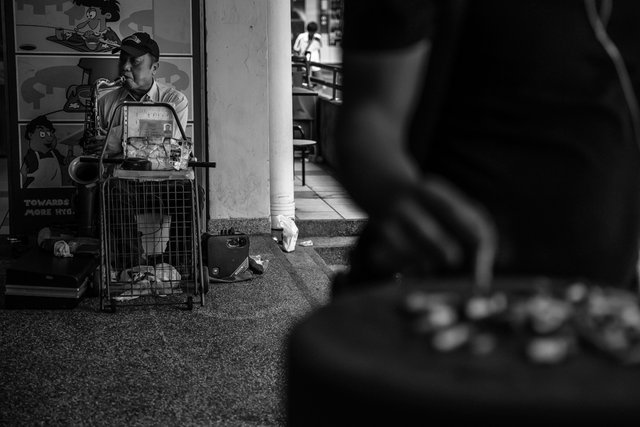Photography Industry - 2017 year in review.
Photography Industry – 2017 year in review
I’ve always loved figures, facts and hard science. In many ways contrary to the way many people approach art. Photographers however are often a bit of a different breed. I’ve met plenty of photographers who share my love of all things tech, from sensors to shutters, dynamic range to DXO scores.
With that in mind I wanted to take a look at 2017 for the photography industry and where the big brands stand right now. Some of you may have heard that 2016 marked a huge downturn for the photography industry, with a continued downtrend in camera sales across the board since 2012. Many attributed this to Smartphones essentially killing off the industry with widespread fears of further job cuts within the major manufacturers.

Global Camera Sales 2017
I’m pleased to say 2016 did not prove to be the beginning of the end for our industry and 2017 actually marked a 13.5% increase in global camera sales with 18.91 million units shipped, up from 2016’s 16.65 Million and 2015’s 16.73. Still a far cry from 2008’s peak of 88.67 Million 2017 has well and truly bucked the trend of the last half a decade in the industry. It’s safe to say that since 2012 smartphones have cannibalised the industry to some extent, for many removing the necessity for a dedicated camera.
What we’ve seen in 2017 is that smartphones haven’t continued their meteoric improvement in image quality. In fact across the board, from DSLRs all the way through to fixed lens compact cameras and smartphones, image quality improvements seem to have tailed off considerably. It’s not surprising when you look at the quality of sensors we have on offer. We’ve seen major manufacturers retain the same sensors for 4-5 years at a time, preferring usability upgrades and processing upgrades in favour of raw imaging performance.
There was once a point where the mainstream media would have suggested that in just a few years smartphones would match dedicated imaging devices in terms of resolution and quality however that seems to have been long forgotten, and rightly so. What we’re seeing is a consolidation of performance among all sensor sizes, much like retina screens we’ve reached the limit to how many effective photo sites can be crammed in. Going back to global camera sales it would be fair to suggest that while smartphones contributed to the downturn of the photography industry, they have also contributed to it’s 2017 upturn. Many new generation photographers have discovered and nurtured their passion through their smartphones, before realising the limitations of those devices.

Fixed/Interchangeable Lens Systems
When we break down the market we see that both the fixed lens and interchangeable lens markets have seen year on year gains of (18.1% and 8.7% respectively). For me this plays into my theory that smartphone users have started to push the limitations of their devices and require that bit more from their cameras. Cheaper fixed lens camera’s have seen the bulk of the sales with a huge 18.1% increase which to me suggests that, for the moment, there are a lot of people who want more than their phones can offer but in an easy to carry package not normally offered by interchangeable lens options.
Much as the smartphone audience has spilled into the fixed lens market, even the interchangeable lens market has seen a fantastic recovery from previous years. I think here (But arguably this applies to the fixed lens market as well) we’re seeing the result of product consolidation. Camera manufacturers repeated use of ‘old’ tech when it comes to sensors has seen some fantastic prices across the board. From older camera’s getting a little long in the tooth (Such as the Canon 6D, only recently replaced by the Mark II which, for many, was a step backwards from it’s 5 year old predecessor) to newer models utilising old sensors, such as the Olympus E-M10 Mark III, really just marginal improvements on an already impressive camera.
Mirrorless Cameras
Mirrorless Camera’s are 2017’s big winners, with a huge 46.9% volume increase year on year, it also marks the best year on record for Mirrorless Cameras. The aforementioned product consolidation really comes into play here. We’re seeing mirrorless camera’s offered onto the market at entry level prices with genuinely pro performance. Personally I think we’re also seeing the smartphone users who – rightly – see little point in a marginal upgrade to a fixed lens compact, and want a DSLR style usability with sizes closer to a compact.
I think with Mirrorless we’re also seeing the effect of product integration. With a few years on the market this is now a well proven segment, with a plethora of used lenses also available to compliment a new camera purchase. Early sceptics of the segment have been well and truly silenced as we’ve seen professionals from all corners of the industry dabbling with Mirrorless. Many – myself included – would conclude that the drawbacks of a mirrorless system outweigh the potential advantages, but use the cameras for everyday use instead of their professional work. This ‘Pro’ endorsement has really ushered in the era of Mirrorless, but it’s also helped define the segment as a compliment to a professionals DSLR stable rather than an alternative.

Market Share – SLR Category
Among the big brands we’ve seen little movement in 2017, instead we see Canon really consolidating their hold over the interchangeable lens SLR market with a whopping 63.3% market share over Nikon’s 31.6%. Over the last 5 years we’ve seen Canon strengthening their grip on the SLR market with Nikon slowly falling off the pace (Barring a slight upturn in 2014). It’s hard to pin down what shapes this kind of trend, in all honesty both manufacturers produce great products, but Nikons spate of product recalls may have had a little to do with this.
Certainly in my segment of the market (weddings) there has been a clear shift away from Nikon after an apparent widespread u turn a few years back when shooters across the world were clamouring to get their hands on the Nikon d750 with it’s incredible dynamic range. Unfortunately that model would prove to be particularly plagued by issues, recalls, and editing problems for users trying to get back to the Canon-esque colours they were used to.
Market Share – Mirrorless
In the mirrorless world Olympus retain their lead however Sony have this year dropped to third on our charts behind latecomer to the segment Canon. While slow to follow the mirrorless movement Canon have well and truly stamped their intention this year, grabbing 18.5% market share. In the process they have eaten into Olympus’s hold, taking their share down from the 2016 high of 34.5% down to 26.8%. Sony are this years big losers in the mirrorless world, their share dropping year on year from a 2015 high of 34.3% (When they topped the charts) to just 24.8% in 2016 and declining further to just 17.9% in 2017.
I think what we’re seeing here is Olympus benefitting from the expansive range of low cost Micro 4/3rds lenses now available both new and used, combined with their strategic upgrades such as the aforementioned E-M10 MK III. While minor, they have clearly listened to their critics as well as their fans, improving on what consumers loved, and working to fix issues that have been pinned on them, such as clunky menu’s and 4K video credentials. Unfortunately Sony still struggle with the lenses, especially when compared to Olympus’ super affordable options. It seems that Canon, with their advertising budgets and huge brand awareness have swept in and hoovered up sales across the board.

Where do we go from here?
I see no reason for 2018 not to continue the momentum that 2017 has provided, with continued affordability pushing the market in it’s recovery. To look more closely at the DSLR market for a moment I see little signs of anything major coming out of Canon or Nikon at the moment although 2018 is a World Cup (football) year which does often mean we can expect to see at least something from the big two. Personally I’d be surprised to see a new 1 series from Canon, just because of how well the current 1Dx MkII is still doing. Let’s not forget that camera will only be two years old in 2018, and the Mark I wasn’t replaced for four whole years. On the Nikon side I was initially expecting to see a 5Ds announcement early next year, but the closer we’ve got to January, the more their silence has been deafening. With recent factory closures Nikon seem to be really feeling the strain of Canon’s dominance and I would wager that a new ultra pro level camera would be a foolish R&D expenditure. We could see a d750 replacement, in many ways that would be the only sensible option in terms of pro level upgrades from Nikon.
Which leads me right on to the Mirrorless market where we’ve seen definite consolidation rather than innovation of late. My money is on 2018 being the year of the Mirrorless. At the moment the DSLR market seems to have stalled slightly, partly – I suspect – due to Canon and Nikon essentially looking elsewhere. Exactly where that is remains to be seen, but we have seen both brands declare their interest in the Mirrorless space, with Canon’s 2017 run being particularly impressive.
I predict that 2018 will be defined by Canon and/or Nikon’s Full Frame Mirrorless offerings. Whether it will be about who can get the product to market first or just who does it better, I do think that right now, that’s where both brands are heading. That’s not to say that I think that FF mirrorless is the RIGHT course for any brand right now…

The Curious Case of Sony Alpha
Lenses aside why DIDN’T Sony destroy the market with their full frame mirrorless camera’s? Why WOULD they? Look at it this way, you buy full frame for image quality and – most likely – regular professional use. Mirrorless is designed for size. Mount a 24-70mm 2.8 lens on a Sony and place it next to a Canon 6D + 24-70 and you’ll see very little different in size. Instead the Sony falls behind with it’s apparent lack of ANY ergonomics. It doesn’t fit into EITHER market, so it flounders in between.
I really believe that unless Nikon or Canon have something really clever up their sleeves when it comes to the physics of making smaller glass reflect light well enough for a FF sensor, then I don’t see Mirrorless FF being the game changer some expect from Canon in particular. What I do expect to see is more and more consumers become interested in the segment when Canon fully mark their intentions by announcing a FF mirrorless. This is where I feel more tried and tested options such as the Micro 4/3rds offerings and Fuji X systems really coming into their own. Instead of forking out for a brand new FF mirrorless system from Canon or Nikon I fully expect plenty of consumers to evaluate their options and put their money down on the value offerings from Fuji, Olympus and Panasonic.

Onwards and upwards
I think we’ll definitely see an increased vigor for the Mirrorless market next year. But just as the smartphone market seems to have propelled the mirrorless market, I expect to see the mirrorless market propel the SLR market. With users discovering the inherent limitations for mirrorless in terms of Autofocus performance and relatively limited AF potential compared to their bigger SLR siblings. The main thing is that our industry is certainly not dead yet! One thing’s for sure, photography its-self isn’t going anywhere, and our world seems to be becoming more and more image driven, from social media to advertising. Let’s hope that we can have 5 years of upwards market movement to cancel out the last 5 years of downturn!
I'd love to hear your thoughts! Let me know where you think the industry is heading. Other than the sales statistics, all opinions are purely my own thoughts on the industry, I'd love to hear opposing views and why you think I'm right or wrong in any of my statements! It's an exciting time as always in the industry and I don't claim to be universally correct!
In with my upvote before this article takes off! Great research. And very timely for me. I'm strarting to consider my camera purchase. I'm leaning mirrorless just for the ease and because I'm a complete novice about the technical side of photography.
Thanks bud :) much appreciated! Although I’m not sure this ones going to go particularly wild! In all honesty the big advantage with mirrorless is size (and affordability if you’re looking to the micro 4/3 models). In terms of ease of use the ergonomics of something like a Canon Rebel are fantastic, I’d argue they are actually easier to get to grips with but obviously nowhere near as
@originalworks
The @OriginalWorks bot has determined this post by @skiesandsports to be original material and upvoted it!
To call @OriginalWorks, simply reply to any post with @originalworks or !originalworks in your message!
Really nice article with well researched information!
I nominated you for the 7 Day Black and White Challenge. Maybe you want to take part!
My main hope , as I invested much in canon Lenses the last two years is, that canon is makeing advatage in dynamic to get closer to nikons d750 or 850 . Because I often am a kind of jealous, when I see the pics of a nikon user and good friend of mine who got them both while I updated my beginner cop Kam to the canon 6d.
It would be really nice to see but given the recent additions of 5d4 and 6d2 I just can’t see canon bringing out anything full frame that’s going to push the DR to Nikon and Fuji levels. I was really disappointed the 5 and 6ds didn’t seem to bridge the gap that everyone expected them to.
original work indeed
i think you should start a photo contest